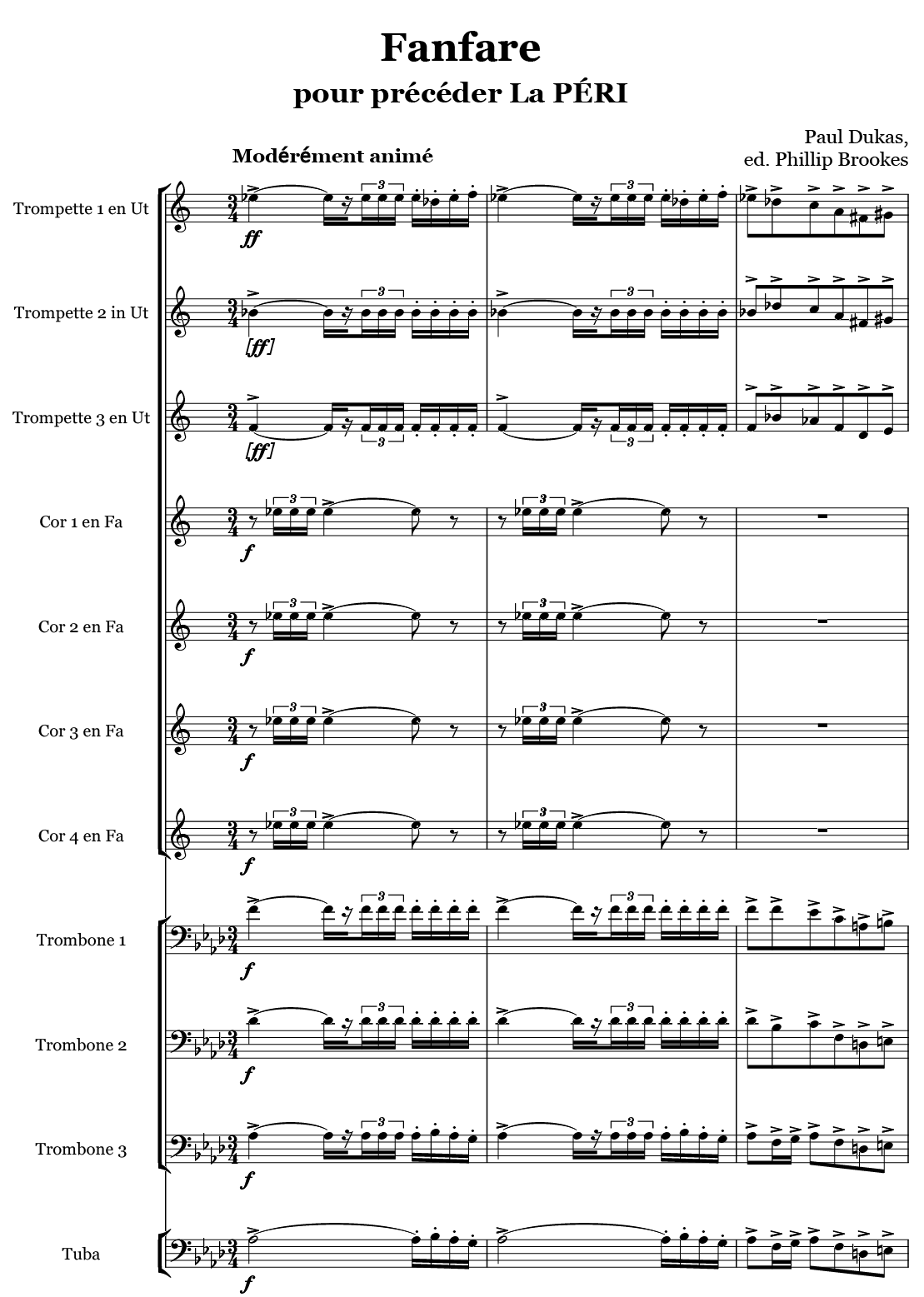

Paul Dukas
(b. Paris, 1 October 1865 – d. Paris, 17 May 1935)
Fanfare pour précéder La Péri
Dukas wrote the short ballet La Péri in 1911 for the dancer Natalia Truhanova. It was first performed on 12 April 1912 as part of a quartet, with Florent Schmitt’s La tragédie de Salomé, d’Indy’s Istar, and Ravel’s Valses Nobles et Sentimentales. Dukas’ 20-minutes work complemented the other scores well, with its dreamy exoticism and orchestration that Dukas likened to “a kind of translucent, enamel”. The ballet score is published by MPH in volume 375.
At the very last minute before the first performance, Dukas wrote this fanfare for eleven brass instuments, to serve as an introduction to the ballet. Its stately progress introduces typically impressionist harmonies, and a quieter section (figure 4) anticipates the mood of much of the ballet. The fanfare is often performed independently of the ballet, making a brilliant opening to a concert.
Sadly, this fanfare was the last piece of his music that Dukas allowed to be published, and he spent the remainder of his life teaching at the Paris Conservertoire, where his pupils included Manuel de Falla, Joaquín Rodrigo and Olivier Messien.
Phillip Brookes, 2013
Paul Dukas
(b. Paris, 1 October 1865 – d. Paris, 17 May 1935)
Fanfare pour précéder La Péri
Dukas schrieb das kurze Ballet La Péri im Jahr 1911 für die Tänzerin Natalia Truhanova. Es wurde am 12. April 1912 uraufgeführt als Teil eines Quartetts, bestehend aus Florent Schmitts La tragédie de Salomé, d’Indy’s Istar und Ravels Valses Nobles et Sentimentales. Mit seinem verträumten Exotismus und einer Orchestration, die Dukas mit einem “transluzenten, überwältigenden Emaille” verglich, vervollständigte Dukas’ zwanzigminütiges Werk die anderen Werke perfekt. Die Partitur des Ballets ist bei mph unter der Nummer 375 veröffentlicht.
Buchstäblich in letzten Minute vor der Aufführung schrieb Dukas diese Fanfare für elf Blechbläser, die als Einleitung zum Ballet gedacht war. Das getragene Fortschreiten des Werks präsentiert typisch impressionistische Harmonien, eine ruhigere Sektion (Ziffer 4) nimmt viel von der Stimmung des Ballets voraus. Die Fanfare wird häufig unabhängig vom Ballet aufgeführt und ist eine brillante Einleitung zu einem Konzert.
Leider ist diese Fanfare das letzte Werk, das mit Dukas Zustimmung veröffentlicht wurde. Er verbrachte den Rest senes Lebens als Lehrer am Pariser Konservatorium, wo unter seine Schülern Manuel de Falla, Joaquín Rodrigo und Olivier Messien zu fnden waren.
Phillip Brookes, 2013